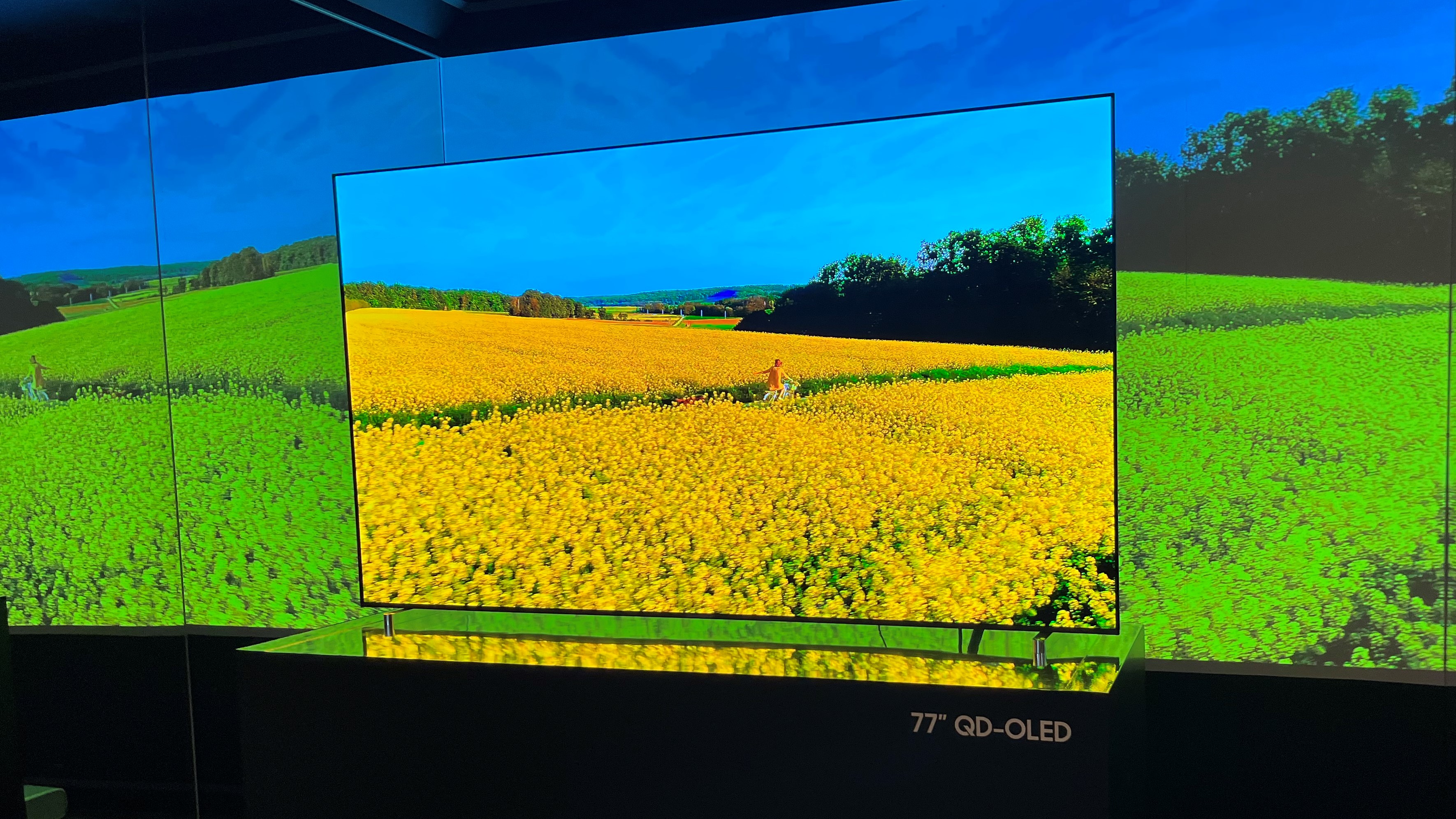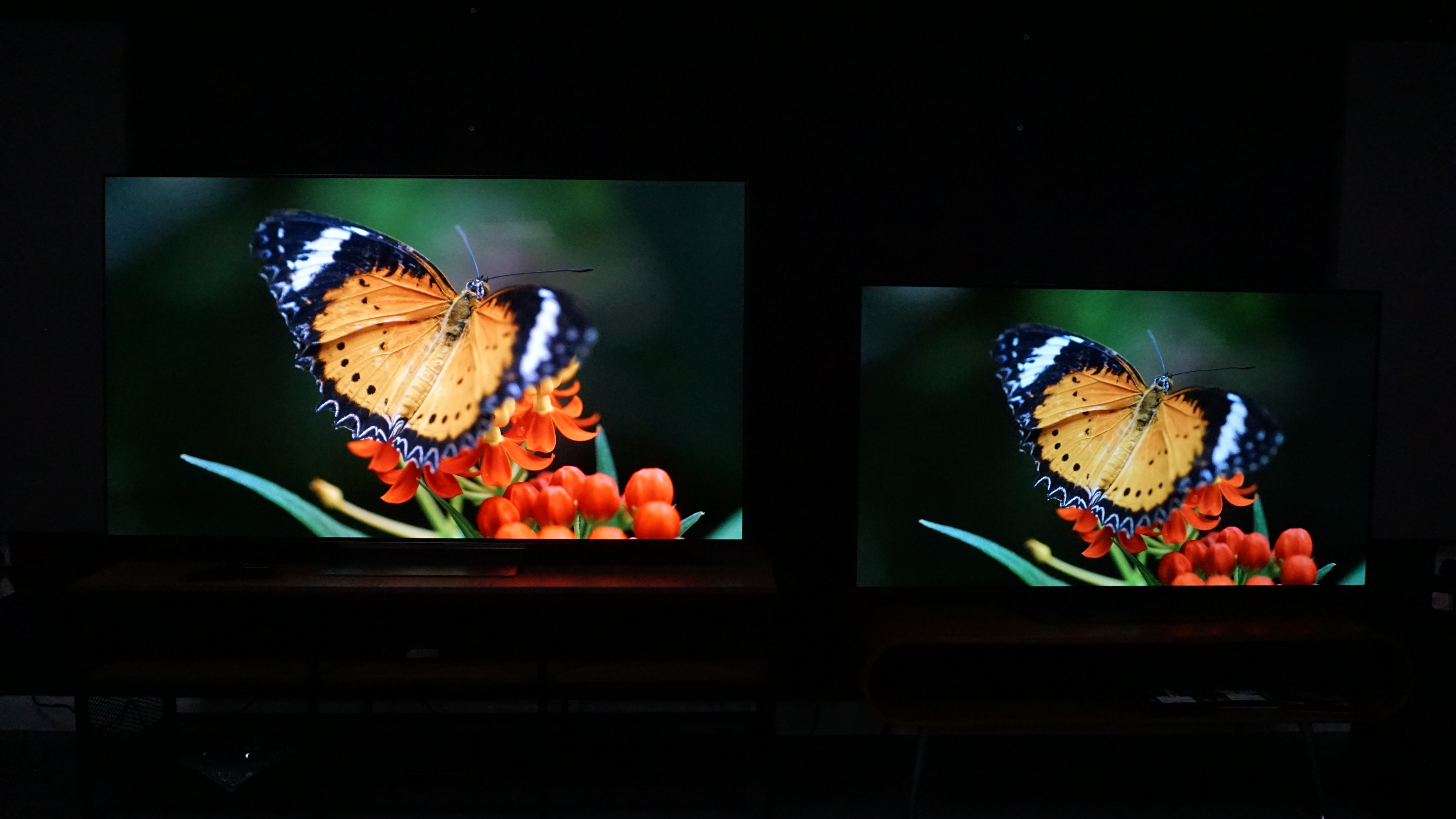Why the savior of regular OLED TVs against Samsung's QD-OLED is MLA tech
There’s life in the old OLED dog yet

2023 was the year that QD-OLED crashed OLED’s party and took over the TV world. We rated the Samsung S90C, an entry-level QD-OLED that made the display tech more affordable after its introduction in 2022, as TV of the year at the TechRadar Choice Awards 2023, which firmly cemented its place among the best TVs.
Its more premium sibling, the Samsung S95C, also received a glowing five star review from us and took its place as 'best premium OLED’ on a lot of our lists. Both these TVs offer outstanding picture quality, stacks of gaming features and have an extremely competitive price point compared to regular OLEDs.
The best OLED TVs offer much more than LCD screens: near-perfect pictures. This comes down to the OLED panels themselves, which offer spectacular contrast, rich and accurate black levels and tones, vibrant colors and true-to-life textures thanks to OLED’s ability to self-dim to get the most accurate picture.
One thing regular OLED (referred to as W-OLED) panels struggled with, though, was brightness. Most people accepted that if you had a bright room and wanted an OLED quality picture, you’d need to invest in some blinds. It was worth it for the trade-off of the phenomenal picture quality you could get.

But that all changed when Samsung introduced QD-OLED, which combined the best of OLED and Quantum-dot technology, in 2022. The brightness yielded by quantum-dot tech, championed by Samsung in its QLED TVs, combined with OLED’s contrast created the best of both worlds. In 2023, this was well and truly improved by the Samsung S90C and Samsung S95C. The technology was so good that Sony released its own premium QD-OLED TVs in 2022 and 2023 – the Sony A95K and Sony A95L.
While regular OLED TVs still had their place because they were still cheaper, Samsung changed that with the launch of the S90C as it was even cheaper than the competition, including the LG C3. Suddenly, regular OLED was really on the ropes, so much so that earlier this year I wrote how the time of OLED was over.
So realistically, what could regular OLED do to keep itself in the game? The answer was the introduction of micro-lens-array (MLA) technology.
Sign up for breaking news, reviews, opinion, top tech deals, and more.

MLA: regular OLEDs helping hand
At a quick glance, MLA technology involves the use of millions of microscopic lenses that sit above an OLED panel to improve brightness compared to regular W-OLED panels. To give you some numbers, over 5,000 lenses can be matched to a single OLED pixel, meaning that in a 77-inch OLED TV, there would be some 42.4 billion lenses in total. This, in theory, would add extra levels of brightness to W-OLED panels to catch up with QD-OLED.
MLA was meant to lead to brighter OLED TVs but did it actually happen? Thankfully, this year I got to test two TVs that use both OLED and MLA technology - the LG G3 and Panasonic MZ2000 - and can confirm that it did in fact make a difference.
When we measured the Samsung S95C’s peak brightness levels, it gave a result of 1,400 nits on a 10% HDR window, significantly brighter than any regular OLED had managed to achieve before it. When I measured the LG G3 and Panasonic MZ2000 on the same 10% HDR window, they achieved results of 1,449 and 1,480 nits, respectively. Although this isn’t a huge difference in real terms, symbolically this was huge – QD-OLED had been bested in peak brightness terms. Even on a fullscreen (100%) white HDR window, the Panasonic MZ2000 scored higher than the Samsung S95C, with results of 280 nits vs 265 nits. The LG G3 was lower at 219 nits, but this is still a good result for a regular OLED panel.
But more importantly, what did this do for the picture itself? For the LG G3, which was now a full 300 nits brighter than the LG G2, colors were more dynamic and vivid and the increased brightness not only meant stronger contrast, but this led to the impression of even deeper black levels than before. In snowy scenes on the Spears & Munsil UHD Benchmark Blu-ray, whites were dazzling thanks to the MLA’s added punch.
The Panasonic MZ2000, which I expected to have a true-to-life picture with accurate textures and depth based on Panasonic OLEDs I had seen in my previous AV retail work, had not only this but also now stunning, crisp colors that exploded from the screen. I checked out scenes from the Star Wars sequel trilogy and lightsabers and laser bolts from X-Wings and stormtrooper rifles were even more brilliant than I expected, with the luscious reds, greens and blues glowing against the black levels, made even deeper by the new and improved MLA/OLED combo contrast.

Final thoughts
OLED TVs are continually evolving and even though W-OLED TVs don’t have the same benefits as QD-OLED and MLA OLED TVs when it comes to brightness and contrast, they do still serve a purpose. I described the LG B3 as the dark horse of the OLED TV world and I do still believe this as the picture quality it managed to achieve with a regular OLED panel was impressive. There’s of course OLED EX panels still available in TVs such as the LG C3 and the fantastic Philips OLED808 that improve brightness on conventional OLED panels as well.
If anything, the introduction of OLED and MLA vs QD-OLED could mean even more affordable OLED sets that use the regular panels (although there’s no way of knowing this, we can only hope!). What is good to see though is that while regular OLED looked like it was down and out, MLA has well and truly come in to save the day. The Samsung QD-OLEDs may have been the all-around stronger TVs this year, but who knows what 2024 will bring.
You might also like...

James is the TV Hardware Staff Writer at TechRadar. Before joining the team, he worked at a major UK based AV retailer selling TV and audio equipment, where he was either telling customers the difference between OLED and QLED or being wowed by watching a PS5 run on the LG 65G2. When not writing about the latest TV tech, James can be found gaming, reading, watching rugby or coming up with another idea for a novel.